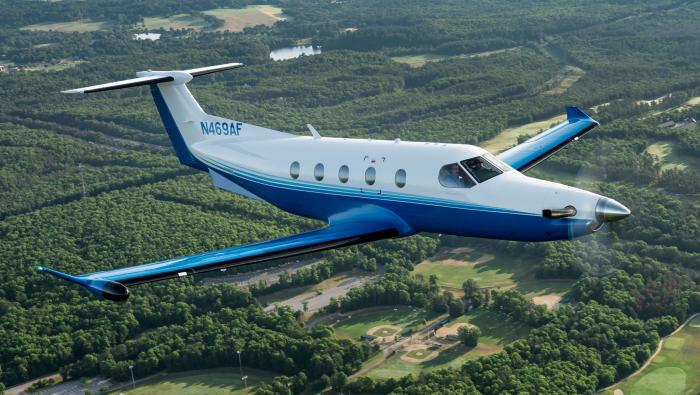|
Business aviation flight activity in the North American and European markets continued a downward trend in July but flourished so much in other parts of the world that operations ended up 0.9% globally year over year (YOY), according to the latest report from Argus International. Argus TraqPak data shows North American activity slid by 0.3% YOY while in Europe flights were down 6.2%. In North America, turboprop flying ended on the positive side, up 1.1%, thanks to a 7% gain in fractional flying and a 4.7% increase in Part 135 flights in that aircraft category. Likewise, midsize-jet flights strengthened by 2.8% as fractional flights surged by 13.9% with those aircraft. However, flight activity involving large-cabin jets plunged 8.9% YOY, and light jets dipped by 0.5%, even though fractional flying was up 7.1% and 16.5% in those aircraft categories, respectively. Even with the Olympics beginning in July, European activity fell, primarily from a 15.6% YOY slide in turboprop flights and an 8.7% drop involving large-cabin jets. Midsize jet operations also were down by 1.2%, but light jets inched up 0.6% last month. As for the rest of the world, business aircraft flights were up 26.1% YOY in July, thanks to a 45.9% jump in turboprop operations and 22% in midsize-jet activity. Light jet flights also were up by 16.7% and large-cabin jets inched up 1% last month. |
|
|
The ACI Jet avionics installation and interiors and completions teams have returned to service the company’s first installation of a SpaceX Starlink satcom system in a Bombardier Global 7500. Consisting of a Starlink electronically steered antenna, router, and power supply, the installed package weighs about 48 pounds. Installation required “minimal structural modifications,” according to the company, and “minor alterations to the interior cabinetry were necessary.” “With more installations lined up, it was essential that we delivered a flawless product to our customer,” said ACI Jet senior v-p of aircraft maintenance David Jensen. “This installation put our repair station model to the test, stacking teams with complementary skill sets together on assigned aircraft throughout the installation process, and it proved the concept with flying colors.” Supplemental type certificates are available to business aviation Starlink dealers for various Gulfstream and Bombardier models and Textron Aviation’s King Air 200 and 300 series, with more types under development. More than 6,000 Starlink satellites in low-earth orbit provide high-speed internet service to airborne and terrestrial users. SpaceX publishes download speeds at 40 to 220 Mbps and uploads at eight to 25 Mbps. System cost is $150,000, plus installation, and service prices range from 20 GB for $2,000 per month (plus $100/GB additional) to global unlimited for $10,000 per month. |
|
|
Charter aircraft hourly rates in the second quarter fell 3% quarter-over-quarter but were still up 2% from a year ago, according to the latest activity report from private charter marketplace JetASAP. Data for the report was collected from more than 20,000 direct charter operator quotes in the U.S. and Canada. Average hourly charter rates in June for turboprops showed the smallest erosion in the quarter, down 1% to $4,370. The super-midsize jet class followed with a 2% decrease, with average rates of $9,744 per flight hour. Rates for light and midsize jets both slid by 3% to $7,022 and $8,196, respectively, per occupied flight hour. Meanwhile, the heavy jet category plunged 20%, with prices falling to $11,608 per flight hour. "The second-quarter data showed that 75 percent of quotes that came through the app were on light and midsize jets as 70 percent of all the trip requests are at or below 3.5 hours of flight time. In addition, the passenger count on these trips is between one and four people. The combined flight time with passenger count makes these trips the perfect mission for both light and midsize jets and more cost-effective for flyers," explained JetASAP founder and CEO Lisa Sayer. |
|
|
The U.S. Army and the Hawaii Department of Transportation (HDOT) have signed an agreement on a new 50-year lease at Kawaihāpai Airfield (PHDH)—formerly Dillingham Airfield—located on Oahu's north shore. While the field is owned and operated by the Army and used for military training, the vast majority of its traffic is general aviation and is served by FBO North Shore Aviation Services. HDOT noted that PHDH is leased for civilian recreational purposes and it is home to businesses catering to visitors and local patrons, providing glider flying, free-fall parachuting, sightseeing, and occasional trips to neighboring islands. The fate of the airfield, with its 9,000-foot runway, had been in question for the past decade before the deal was finalized last month. Maintenance and management of its degraded water system had been a specific bone of contention. According to HDOT director Ed Sniffen, the process involved a wide range of stakeholders—elected officials, the Army Garrison Hawaii, the Army Corps of Engineers Honolulu District, and local businesses—and ended a decade of negotiations. While local Army commanders are typically empowered to negotiate short-term leases, the 50-year length of this lease was an unusual situation that required approval from Army headquarters in Washington, D.C. The renewed lease will also make PHDH eligible to receive federal grants to address infrastructure needs. |
|
|
Sponsor Content: Textron Aviation When you fly a Cessna piston, it's about experiencing the flight, not just the destination. The full line of Cessna pistons have new instrument panels, sleeker interior designs, improved tech and exterior schemes. Enjoy style and convenience without sacrificing durability. |
|
|
Lider Aviation is promoting both the HondaJet Elite II light business jet and the Japanese manufacturer’s larger Echelon model this week at LABACE 2024 in São Paulo, Brazil. As Honda Aircraft’s exclusive sales representative in Brazil, Lider has now signed letters of intent covering purchases of 30 Echelon twinjets, which is expected to complete FAA certification in 2028. The Echelon’s projected range of 2,700 nm would allow it to travel nonstop from any two points in Brazil, a range unequaled by others in its class. Lider sales manager Anderson Markiewicz called the aircraft “a light jet with medium characteristics.” The new HondaJet model competes with Embraer’s locally-made Phenom 300 in Brazil. While waiting for the Echelon, Lider is doing a booming business in preowned business aircraft. “2022 was an all-time high, and while 2023 declined, 2024 is up again,” Markiewicz told AIN. He noted that the Brazilian market for preowned turboprops and jets “in 2022 was 2.5 times the market in 2019.” So far this year, Lider has sold 10 preowned aircraft and the company expects to double that number by year-end to reach the same sales tally as in 2022. |
|
|
At its satellite location in Denver, Duncan Aviation’s avionics team has performed the first customer Citation CJ2 upgrade to a Garmin G600-based avionics suite. The Garmin G600 TXi displays and other products replace the CJ’s original Collins Pro Line 21 avionics and reduce empty weight by 160 pounds. In addition to dual 10.6-inch G600 TXi touchscreen displays, the package includes dual GTN 750Xi navigators, a seven-inch TXi engine instrument display, the GFC 600 autopilot, GMA 350 audio panel, and two GI 275 standby instruments. The GFC 600 autopilot includes Garmin’s Electronic Stability and Protection system as well as coupled VNAV descents and fully coupled go-arounds. Emergency descent mode is a standard feature of the CJ’s GFC 600, and this automatically descends the airplane to a preset altitude in case of loss of cabin pressure. An option for the CJ2 and selected by the customer is the GWX 8000 StormOptix weather radar, which features auto mode for a better depiction of weather phenomena and enhanced ground-clutter suppression. Garmin’s PlaneSync GDL 60 connected aircraft management system is also an available option for the CJ2 upgrade. PlaneSync enables automatic avionics database updates on the ground via 4G LTE or Wi-Fi, as well as the ability to check fuel quantity, database status, GPS location, temperatures, and other information remotely using the Garmin Pilot app. |
|
|
Cutter Aviation, the U.S. Southwest-based aviation services provider, has broken ground on a ramp expansion at its facility at Arizona's Prescott Regional Airport (KPRC), where it operates the lone FBO. The project will add 86,973 sq ft of ramp space, bringing the FBO—one of six owned by Cutter in Arizona, New Mexico, Colorado, and Texas—just shy of seven acres of aircraft parking space. It will also increase the vehicle parking lot space by 25,000 sq ft. It is expected to be completed in first-quarter 2025 and Cutter said the work will not hinder its operations at KPRC. “We are excited about increasing our ramp presence in Prescott,” said Will Cutter, president and CEO of the family-owned business—one of the oldest names in business aviation. “With based and transient traffic on the rise, this expansion fits the growing needs of general aviation at the Prescott airport.” Cutter also operates satellite sales and maintenance support facilities at Denver Centennial Airport (KAPA) and in Texas at Addison (KADS) and San Antonio International (KSAT) airports. |
|
|
Aviation Charters, a sister company to New Jersey-based service provider FlightServ, has achieved FAR Part 5 SMS Active Conformance status. This is one of the industry’s highest levels of safety management certification and makes the company the first in the Greater Philadelphia area to obtain it. Based at FlightServ’s FBO and maintenance base at Trenton Mercer Airport (KTTN), Aviation Charters embarked on its mission to achieve the standard in March 2019 when the rigorous process was part of the FAA’s Safety Management System Voluntary Program. Its SMS manual was approved in January 2020. In May 2024, the voluntary program became mandatory for Part 135 charter operators, and Aviation Charters recently received its certification. For the company in general, SMS is not limited to its aircraft operation but is embraced by all of its divisions, including its FBO, aircraft maintenance, and aircraft detailing businesses. “It has taken an immense amount of effort and focus from every single employee across our companies to make this industry-leading achievement possible,” said Aviation Charters president Paul Weiss. “This certification underscores our unwavering dedication to safety at every level.” He added that an active SMS allows it to proactively identify and mitigate risks, ensuring the highest level of safety for its operations. To assist other operators interested in reaching active conformance status, the company has assembled a team of highly-trained professionals. |
|
|
|
|
|
|
AINalerts News Tips/Feedback: News tips may be sent anonymously, but feedback must include name and contact info (we will withhold name on request). We reserve the right to edit correspondence for length, clarity, and grammar. Send feedback or news tips to AINalerts editor Chad Trautvetter. |
|
AINalerts is a publication of AIN Media Group, 214 Franklin Avenue, Midland Park, New Jersey. Copyright 2023. All rights reserved. Reproduction in whole or in part without permission is strictly prohibited. |
















